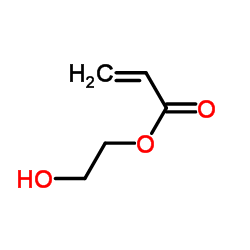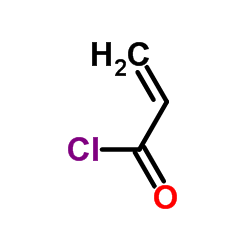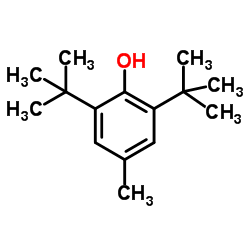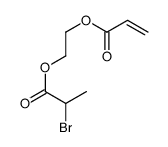2-Hydroxyethyl acrylate

2-Hydroxyethyl acrylate structure
|
Common Name | 2-Hydroxyethyl acrylate | ||
|---|---|---|---|---|
| CAS Number | 818-61-1 | Molecular Weight | 116.115 | |
| Density | 1.1±0.1 g/cm3 | Boiling Point | 196.2±23.0 °C at 760 mmHg | |
| Molecular Formula | C5H8O3 | Melting Point | -60 °C | |
| MSDS | Chinese USA | Flash Point | 98.3±0.0 °C | |
| Symbol |



GHS05, GHS06, GHS09 |
Signal Word | Danger | |
| Name | 2-Hydroxyethyl acrylate |
|---|---|
| Synonym | More Synonyms |
| Density | 1.1±0.1 g/cm3 |
|---|---|
| Boiling Point | 196.2±23.0 °C at 760 mmHg |
| Melting Point | -60 °C |
| Molecular Formula | C5H8O3 |
| Molecular Weight | 116.115 |
| Flash Point | 98.3±0.0 °C |
| Exact Mass | 116.047340 |
| PSA | 46.53000 |
| LogP | -0.05 |
| Vapour density | >1 (vs air) |
| Vapour Pressure | 0.1±0.8 mmHg at 25°C |
| Index of Refraction | 1.440 |
| Water Solubility | soluble |
CHEMICAL IDENTIFICATION
HEALTH HAZARD DATAACUTE TOXICITY DATA
MUTATION DATA
|
| Symbol |



GHS05, GHS06, GHS09 |
|---|---|
| Signal Word | Danger |
| Hazard Statements | H302-H311-H314-H317-H400 |
| Precautionary Statements | P273-P280-P303 + P361 + P353-P304 + P340 + P310-P305 + P351 + P338-P333 + P313 |
| Personal Protective Equipment | Faceshields;full-face respirator (US);Gloves;Goggles;multi-purpose combination respirator cartridge (US);type ABEK (EN14387) respirator filter |
| Hazard Codes | T:Toxic;N:Dangerousfortheenvironment; |
| Risk Phrases | R20/22;R24;R34;R43;R50 |
| Safety Phrases | S26-S36/39-S45-S61-S36/37/39 |
| RIDADR | UN 2927 6.1/PG 2 |
| WGK Germany | 3 |
| RTECS | AT1750000 |
| Packaging Group | II |
| Hazard Class | 8 |
| HS Code | 2916129000 |
| Precursor 9 | |
|---|---|
| DownStream 10 | |
| HS Code | 2916129000 |
|---|---|
| Summary | 2916129000 other esters of acrylic acid VAT:17.0% Tax rebate rate:9.0% Supervision conditions:none MFN tariff:6.5% General tariff:30.0% |
|
Micro-computed tomography image-based evaluation of 3D anisotropy degree of polymer scaffolds.
Comput. Methods Biomech. Biomed. Engin. 18(4) , 446-55, (2014) Anisotropy is one of the most meaningful determinants of biomechanical behaviour. This study employs micro-computed tomography (μCT) and image techniques for analysing the anisotropy of regenerative m... |
|
|
Neural tissue regeneration in experimental brain injury model with channeled scaffolds of acrylate copolymers.
Neurosci. Lett. 598 , 96-101, (2015) The objective of the present study was to evaluate the biocompatibility and cell hosting ability of a copolymer scaffold based on ethyl acrylate (EA) and hydroxyl ethyl acrylate (HEA) in vivo after an... |
|
|
Photopatterned oil-reservoir micromodels with tailored wetting properties.
Lab Chip 15 , 3047-55, (2015) Micromodels with a simplified porous network that represents geological porous media have been used as experimental test beds for multiphase flow studies in the petroleum industry. We present a new me... |
| 2-Propenoic acid, 2-hydroxyethyl ester |
| bisomer2hea |
| 2-Hydroxyethyl acryl |
| Hydroxyethyl acrylate |
| HEA |
| ethylene glycol monoacrylate |
| methanol,methyl acrylate |
| 2-hydroxyethyl prop-2-enoate |
| acrylic acid 2-hydroxy-ethyl ester |
| 4-acryloyloxyethyl alcohol |
| EINECS 212-454-9 |
| 2-Hydroxyethylacrylat |
| MFCD00002865 |
| 2-Hydroxyethyl acrylate |
| Glycolmonoacrylate |
 CAS#:75-21-8
CAS#:75-21-8 CAS#:79-10-7
CAS#:79-10-7 CAS#:107-21-1
CAS#:107-21-1 CAS#:107-02-8
CAS#:107-02-8 CAS#:814-68-6
CAS#:814-68-6 CAS#:108-31-6
CAS#:108-31-6 CAS#:106-90-1
CAS#:106-90-1 CAS#:128-37-0
CAS#:128-37-0 CAS#:292638-85-8
CAS#:292638-85-8 CAS#:188065-73-8
CAS#:188065-73-8![2-[(2-Bromo-2-methylpropanoyl)oxy]ethylAcrylate structure](https://image.chemsrc.com/caspic/366/213453-02-2.png) CAS#:213453-02-2
CAS#:213453-02-2 CAS#:2052-01-9
CAS#:2052-01-9 CAS#:24567-27-9
CAS#:24567-27-9![2-[bis(2-prop-2-enoyloxyethoxy)phosphanyloxy]ethyl prop-2-enoate structure](https://image.chemsrc.com/caspic/214/35057-49-9.png) CAS#:35057-49-9
CAS#:35057-49-9 CAS#:17773-43-2
CAS#:17773-43-2 CAS#:814-33-5
CAS#:814-33-5![2-[tert-butyl(dimethyl)silyl]oxyethyl prop-2-enoate structure](https://image.chemsrc.com/caspic/350/853009-36-6.png) CAS#:853009-36-6
CAS#:853009-36-6 CAS#:995-52-8
CAS#:995-52-8![2-[[(butylamino)carbonyl]oxy]ethyl acrylate structure](https://image.chemsrc.com/caspic/176/63225-53-6.png) CAS#:63225-53-6
CAS#:63225-53-6
